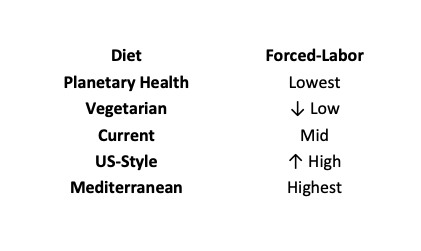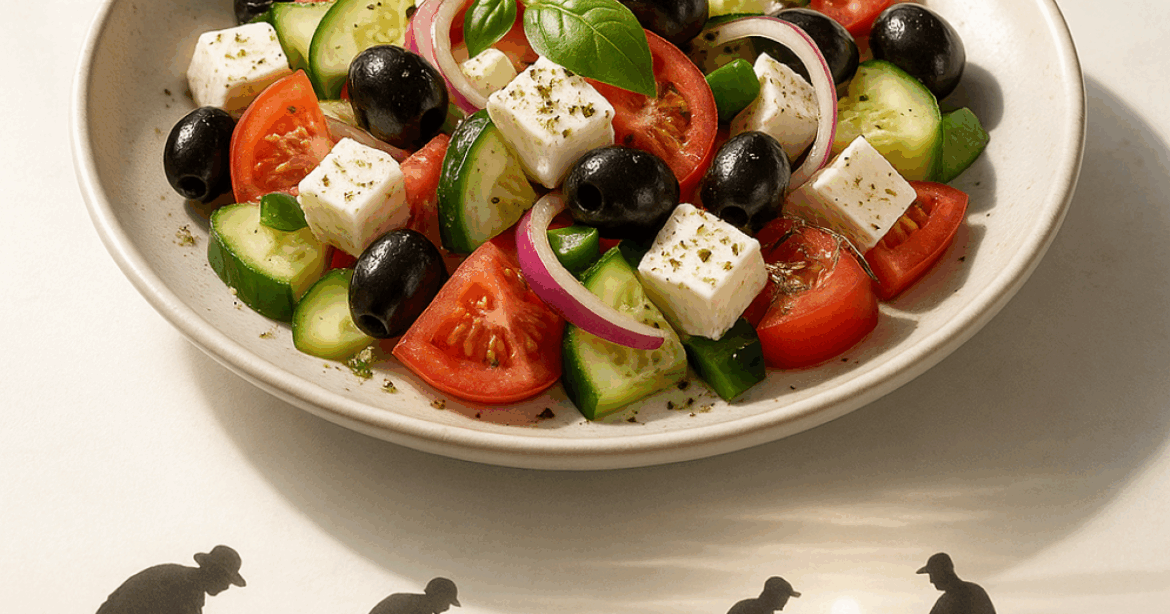Could it be that “eat green, save the planet” comes with worker exploitation? That Instagram shot of your Mediterranean salad may mask a gloomier reality for the people who hauled in its tuna and picked its citrus. Even plant-based plates wobble under cashew-shelling and asparagus-harvesting abuses. According to a new study, there’s no moral free lunch hiding in the produce aisle or for any of the “sustainable” diets.
We often hear that switching to a Mediterranean or plant-forward diet can help the planet and improve our health. Advocates of more sustainable diets have invoked climate change, ethical concerns over animals, and human nutritional health to nudge populations towards these diets. A recent study in Nature Food introduces a social justice argument by estimating the forced labor risk associated with five commonly recommended US dietary patterns.
Measuring the Human Cost of a Meal
Researchers linked national food-consumption data to a global database of labor conditions across more than 200 foods. Each food was assigned a “forced labour risk score” that accounted for where and how it was produced, from harvest to plate, and how many labor hours went into it. The result was a new measure called “medium-risk hours-equivalent,” which estimates how much labor at risk of coercion or exploitation is embedded in a typical diet.
Researchers looked at five dietary patterns:
Current U.S. Diet (CURRENT) – What Americans actually eat based on the National Health and Nutrition Examination Survey (NHANES).
Healthy U.S.-Style Diet (HUS) – The standard government-recommended diet, based on the US 2202 Dietary Guidelines.
Healthy Mediterranean Diet (MED) – Similar to HUS, but with more seafood and fruit, less dairy and red meat.
Healthy Vegetarian Diet (VEG) – Plant-based, includes dairy and eggs, excludes meat and seafood.
Planetary Health Diet (PHD) – A global model from the Lancet, designed to balance nutrition and environmental limits.
Protein Promises, Human Costs

Once the researchers compared these diets, some surprising patterns emerged about where exploitation risks concentrate. Every pattern Americans eat or are told to eat involves some risk. The much-celebrated Mediterranean diet turned out to have the highest embedded risk, primarily because of its heavier reliance on seafood and fruit imports from regions where labor exploitation is widespread.
Across all diets, protein foods (meat, seafood, nuts, legumes) accounted for nearly half of the total risk.

Seafood had double the average risk of other animal proteins due to “high-risk” fishing industries.
Red meat and dairy were persistent trouble spots.
Among plant foods, nuts and seeds—especially cashews—had risk levels up to five times higher than their share of consumption.
Even “green” diets weren’t clean. Fruits like avocados and vegetables such as asparagus contributed disproportionately to risk despite small serving sizes.
Grains, added fats, and sugars were minor contributors (<10%) across all diets.
However, before taking these figures at face value, it helps to ask how the study defines and measures “forced labor.”
Measuring the Immeasurable: Defining forced labor
There is no readily identifiable metric of forced labor. So, this study made use of their prior work. Here is the gist of the process.
Tracing the source of every bite Researchers used datasets on the average consumption of crops and animal products in the US, narrowing their focus to 211 items that reach our plates or 28 ingredients, e.g., cocoa beans.
Re-creating each product’s journey They traced up to three “processing steps,” from harvest to table. They did not follow the livestock back to the crops used as their feed.
Putting a number on “how much work” is in a ton of food Labor intensity was estimated by pairing a product’s price with data on “worker-hours per dollar of output.” Data gaps, often present, requiring further estimation and “correction.”
Scoring the likelihood of forced labor For every country–commodity–processing-stage combination, the researchers assigned a qualitative risk (very low to very high) based on a variety of sources [1]. If sources disagreed, they kept the highest risk rating. Each qualitative tag was converted to a numeric score.
Combining it all into a single risk-per-ton figure The numeric risk, the labor intensity, and the share of US consumption supplied by every country were multiplied together and then added up across all supply-chain stages.
Data Meets Doubt
The metric is partly scientific—it follows a transparent, logic-based recipe and uses real data. However, the metric occasionally crosses the line from science into scientism, where subjective judgments are dressed in mathematical certainty. Risk levels are assigned by humans interpreting news stories, hiding subjective judgment. Those judgments are then squeezed into a rigid scale that suggests a mathematical relationship no study has validated. Price “corrections” substitute for missing farm-gate data, adding further guesswork. The model’s tidy figures mask the messy uncertainties they rest on. In short, the metric may be scientific enough to point towards an issue, but not sufficient for fine-grained comparison.
An Appetite for Change?
“The human cost of bringing these diets to the table is steep indeed.”
The authors argue that to build truly sustainable food systems, we must pair nutritional and climate goals with labor justice — improving transparency, wages, and working conditions from field to factory. While this trumpets a form of moral clarity, it must be considered in the trade-offs.
Ultimately, bolting a social-justice argument onto the already crowded case for “planet-friendly” eating won’t sway appetites that are ruled by taste, habit, and price. Until sustainable meals are as convenient and crave-worthy as the status quo, most diners will nod at the moral math—then reach for whatever’s on special.
[1] They rely on US government reports, NGO databases, academic literature, and 709 investigative-journalism articles screened from 38,000 news stories.
Source: Current And Recommended Diets In The Usa Have Embedded Forced Labour Risk Nature Foods DOI: 10.1038/s43016-025-01242-8
Forced Labor Risks Embedded in Current and Recommended Diets in the USA Science Magazine


Dining and Cooking